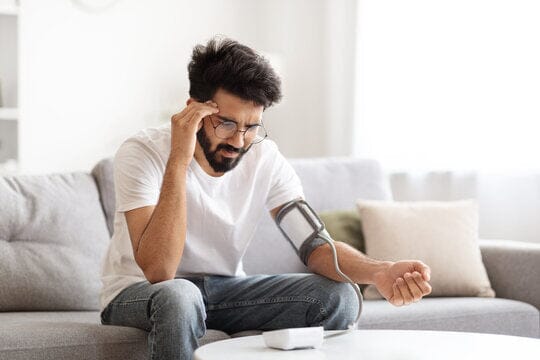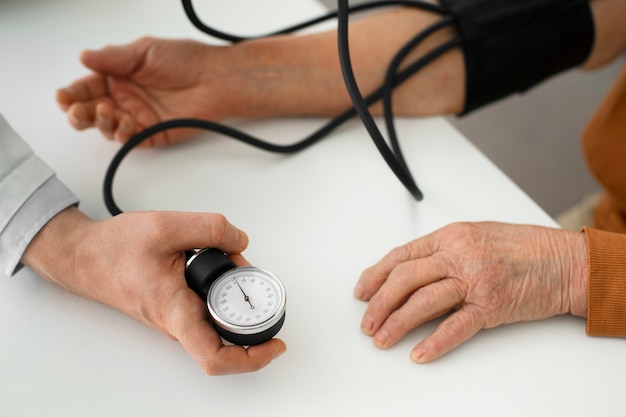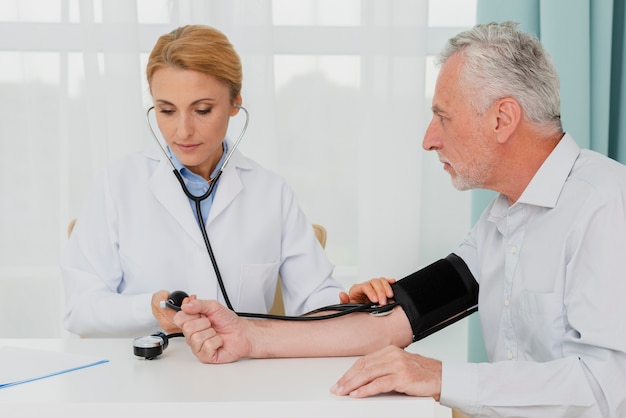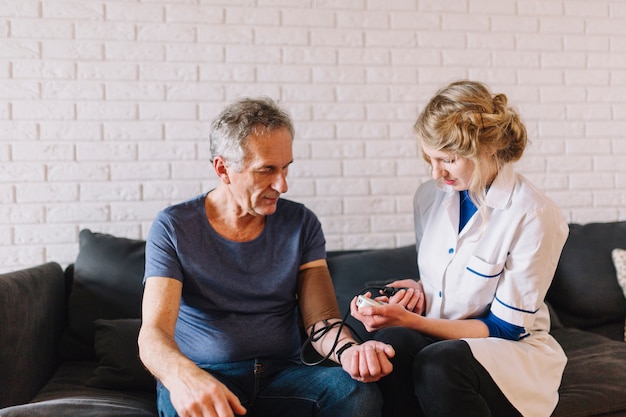
Low Blood Pressure (Hypotension): Symptoms, Causes, and Treatment
Low blood pressure, medically known as hypotension, is a medical condition. We all know that blood pressure readings appear with two numbers; the top number is the systolic blood pressure, and the lower number is the diastolic pressure.
The normal blood pressure level is less than 120/80 mmHg. Hypotension appears when the blood pressure is much lower than expected. In hypotension, the blood pressure reading is around less than 90 60 mm Hg.

The risk of low blood pressure increases with age due to normal life cycle changes. In healthy people, low blood pressure is a severe concern, and it doesn't need any medical attention. However, it can indicate an underlying problem, especially in older people. This condition can reduce the blood flow to the brain, heart, and other vital organs.
Is low blood pressure common? How does it affect you?
Low blood pressure is a common condition that doesn't have many symptoms. However, orthostatic hypotension is more common as you get older. According to reports, around 5% of people have it by the age of 50, and 30% of people have hypotension by the age of 70.

Hypotension affects people of any age. However, it affects people over 50. Hypotension also can affect people who are very physically active, which is more common in younger people.
What are the different types of blood pressure?
Various types of low blood pressure conditions include;
Neurally mediated hypotension: If you stand up for a long time, your blood pressure may fall. It mainly happens due to the communication problem between your brain and heart. This condition is more common in younger people.

Postural hypotension: Sudden drops in blood pressure mostly happen when you rise from a standing, sitting, or lying position. This condition is also known as orthostatic hypotension. This condition happens when your nervous or cardiovascular system doesn't react properly to sudden position changes. Around 10% to 20% of people over the age of 65 have postural hypotension.
Multiple system atrophy with orthostatic hypotension: This is a rare low blood pressure condition that happens when you lie down. It involves the involuntary nervous system that controls your breathing, heart rate, and blood pressure.

Postprandial hypotension: Sometimes, your blood pressure falls an hour or two after a meal. It may happen of your blood pooling into the vessels of the stomach and intestines. It also happens due to extreme carbohydrate intake. This low blood pressure condition is more common in older people with nervous system conditions like Parkinson's disease.
So, when your blood pressure drops or you feel any symptoms like these conditions, you may need to consult a physician for better advice immediately.
What are the signs and symptoms of low blood pressure?
The different symptoms of low blood pressure include:
- Lightheadedness
- Dizziness
- Unsteadiness
- Blurred vision
-
Behavior changes

- Weakness
- Fatigue and lethargy
- Nausea
- Confusion
- Fainting
- Cold and clammy skin
- Pale skin
If your blood pressure goes severely down, your body may not get enough oxygen to carry out its functions. This condition can impair the functioning of your brain and heart and cause severe breathing issues. You may lose consciousness or go into shock when the organs shut down. The shock symptoms are skin getting cold, turning pale, weak or quick pulse, fast breathing, and confusion.

For people with low blood pressure symptoms, the effects depend on the reason why is hypotension happening and how fast it develops. Slow drops in your blood pressure may happen normally. Hence, hypotension becomes more common as you get older. However, this condition may have effects that are disruptive and dangerous.
Usually, our body controls the blood pressure and keeps it from dropping excessively. If your blood pressure starts to drop, your body tries to make up for that by speeding up your heart rate or constricting blood vessels to make them narrow. The symptoms of low blood pressure happen when your body can't offset the drop in blood pressure.

However, in some people, hypotension doesn't cause any symptoms. Many people can't even realize that their blood pressure is low unless they measure their blood pressure.
Conditions that can cause low blood pressure
Various reasons can cause low blood pressure. Some of the common reasons for low blood pressure are;
- Prolonged standing
- prolonged bed rest
- depression
- Parkinson's disease
- Dehydration
-
Pregnancy

Certain medications can cause low blood pressure. Such medications are;
- Heart medications
- Medications for high blood pressure
- Tricyclic antidepressants
- Drugs for Parkinson's disease
- Erectile dysfunction drugs
-
Narcotics
Certain heart problems can lead to low blood pressure, such as;
- Heart valve problems
- Heart attack
- Abnormally low heart rate
-
Heart failure
Besides these problems, some endocrine issues like underactive thyroid, low blood sugar, diabetes, and Addinson's disease can lead to low blood pressure.

Some nutritional deficiencies are also responsible for low blood pressure. Lack of vital vitamins like B-12 and folic acid causes anemia that can lead to low blood pressure.
Some life-threatening scenarios can lead to low blood pressure. Such conditions include:
-
Septic shock: It occurs when the bacteria from an infection enter the bloodstream. This bacteria produces toxins that affect the blood vessels and can lead to dangerously low blood pressure.

- Decreases in blood volume: A severe loss of blood from major trauma or internal bleeding reduces blood volume, which can lead to severe low blood pressure conditions.
- Allergic reaction: Anaphylactic shock is an allergic reaction that may even lead to death. It happens with people who are sensitive to drugs such as penicillin. This condition causes low blood pressure.
FAQs
What happens if blood pressure is too low?
If your blood pressure is extremely low, the vital organs of the body will not get sufficient oxygen and nutrients. When this happens, low blood pressure can lead to shock that requires immediate medical attention.
What is the quickest home remedy for low blood pressure?
Some of the quickest home remedies to treat low blood pressure are;
- Proper hydration
- Eat smaller and more frequent meals
- Consume tulsi leaves
- Consume almonds
-
Wear compressing stockings

How can I raise my blood pressure asap?
- There are a few tips that you may follow;
- Drink sufficient water and fluids.
- Eat salty foods
- Consume caffeine
- Reduce carbs intake
- Enhance B12 intake
-
Reduce meal size
What is the best medicine for low blood pressure?
Fludrocortisone works best for low blood pressure. Still, you need to consult a doctor for the best medicinal suggestions.
* * Medical Disclaimer - The following information is for educational purposes only. No information provided on this website, including text, graphic, and images, are intended as substitutes for professional medical advice. Please consult with your doctor about specific medical advice pertaining to your condition(s).






